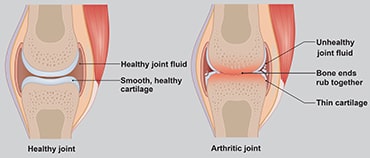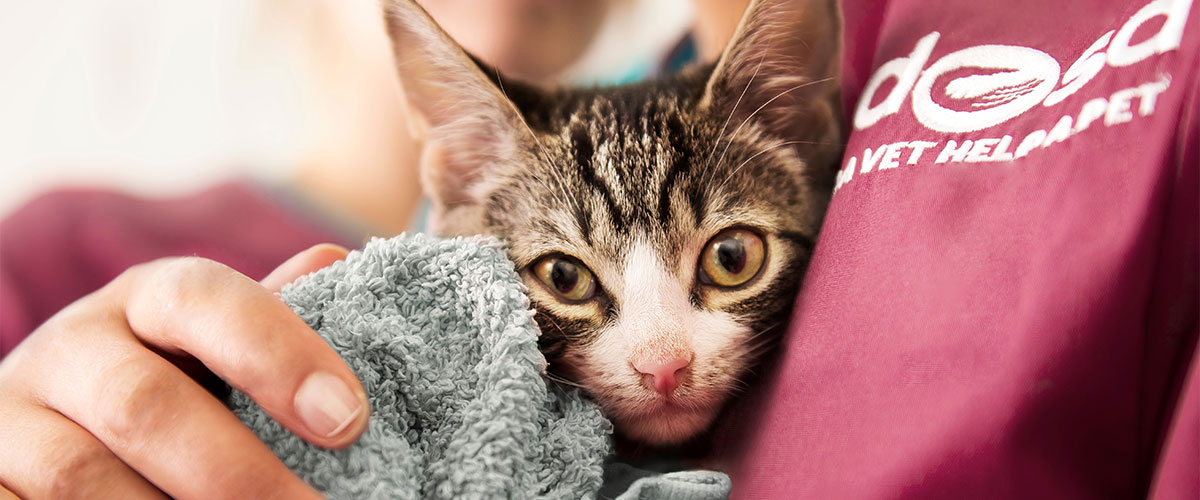Arthritis in cats
Overview
- Arthritis (osteoarthritis) is a painful condition of the joints that makes moving around uncomfortable.
- It’s very common in cats especially as they get older, but unfortunately they are very good at hiding pain, so symptoms often go unnoticed.
- Although there is no cure for arthritis, there are treatments available, and things you can do at home to keep your cat comfortable.
- Contact your vet if you notice your cat slowing down, or if you think they might have arthritis.
What is arthritis?
Arthritis (osteoarthritis) is a painful condition that causes the normally smooth joint surfaces to become rough and uneven. Eventually, the bones in the joint start rubbing together which causes pain and inflammation. Arthritis is most common in older cats, but young cats can also develop it if one of their joints has been injured, infected or hasn’t developed properly. Arthritis is a condition that gets worse over time but, fortunately, there are lots of things that can be done to control the pain it causes.

Symptoms of arthritis in cats
Arthritis in cats is extremely common, in fact, one scientific study showed that 90% of cats over 12 years old had signs of it on X-ray! However, cats have a natural instinct to hide pain, so the signs often get missed. It might help to think back to what they were like a few months/years ago when considering if your cat has any of the following symptoms:
- Limping and stiffness
- Lethargy (low energy)
- Weight loss, muscle wastage and prominent bones
- Difficulty jumping up to high places
- Difficulty using the stairs, cat flap or litter tray
- Less time spent outdoors
- Less time spent playing and hunting
- Sleeping and resting more
- Matted fur due to difficulty grooming – especially in hard to reach places such as their back, back legs and base of their tail
- Stained fur and alopecia (hair loss) due to overgrooming painful joints
- Overgrown claws due to using the scratching post less
- Swollen, painful joints – they might show their pain by being more irritable, avoiding being stroked, or even growling when touched
Diagnosis
To make a diagnosis your vet will ask you about your cat’s symptoms and any other changes you have noticed. They will then watch them move, feel their joints, and if necessary, suggest taking some X-. However, it’s not always necessary to take X-rays to diagnose arthritis, and sometimes arthritis doesn’t show up on them, so if your vet is suspicious they might trial some medication to see if it helps.
 Video found at youtu.be/dVgi7Z4d-xQ
Video found at youtu.be/dVgi7Z4d-xQ
There is no cure for arthritis, but there are plenty of ways you can keep your cat comfortable, including:
Pain relief and anti-inflammatory medication – there are a variety of medications that can be used to control the pain and inflammation associated with arthritis. However, they should only ever be used when prescribed by your vet because, like any drug, they have the potential to cause side effects. Non-steroidal anti-inflammatory drugs (NSAIDs) are probably the most common group of medications used for arthritis in cats because they are excellent at controlling pain and inflammation and there are several different types, so if one doesn’t suit your cat, your vet will be able to try another. If your cat is in a lot of pain, and NSAIDs alone aren’t working, your vet may also add another type of pain relief (such as an opioid) to your cat’s regime. WARNING: Never give your cat human medication without speaking to your vet first – certain drugs, such as paracetamol, are highly toxic to cats.
Weight control - extra weight puts unnecessary strain on joints so cats with arthritis tend to do much better if they are kept a healthy weight. Speak to your vet about your cat’s weight, and if necessary start them on a low-calorie diet. Read more about how to check your cat’s weight and how to safely change them to a new food.
Joint supplements - joint supplements such as omega 3 oils and glucosamine claim to help slow down the progression of arthritis, although there is little scientific evidence of this in cats. There are many joint supplements of varying quality on the market so your vet will be able to advise on which will be best for your cat. It’s important to know that joint supplements aren’t a replacement for medications, and don't work for all cats.
Movement - it’s important to keep your cat active because if they stop moving completely they will become very stiff. Spend time each day encouraging your cat to move around, perhaps try playing gentle games with them.
Ramps and steps – use carefully placed ramps, steps, or furniture to help your cat safely, and comfortably reach their favourite spots.
Comfortable beds - give your cat a selection of comfortable beds they can reach easily. Orthopaedic memory foam beds are particularly good for cats with arthritis.
Keep them warm - a heated bed or heat pad can help reduce the pain caused by arthritis.
Raised food bowls - bending down can be painful for cats with arthritis, raising food/water bowls can help a lot. You can buy specially raised bowls or, alternatively, just place something underneath your cat’s bowl.
Low-sided litter trays - litter trays with low sides will make it easier for your cat to climb in and out.
Additional therapies such as acupuncture - many cats won’t tolerate acupuncture due to stress, but it can be used (in very relaxed cats) to help control pain. If you are interested in acupuncture, speak to your vet who will be able to recommend a qualified acupuncturist. Try to find a therapist that will come to your home to reduce the stress for your cat. Hydrotherapy isn’t a realistic option for most cats. Unless your cat loves water, forcing them into a pool is likely to cause more stress than benefit.
Prevention
There is nothing you can do to completely eliminate the chance of your cat developing arthritis but you can reduce the chance of it happening by keeping them active and at a healthy weight throughout their life. Read more about how to keep your cat slim, how to keep your cat active, and what to feed your cat.
When to contact your vet
Book an appointment with your vet if you notice symptoms of arthritis in your cat. Don’t delay treatment because arthritis is a painful condition that can be well managed with some simple changes. If you have an older cat, it’s a good idea to have them checked every 6 -12 months for age-related problems such as arthritis.
Cost
Arthritis can be expensive to manage over a lifetime, so it’s important to speak to your vet openly about your finances, the cost of treatment, as well as what you think is right for your cat. There may be more than one treatment option, so if one doesn’t work, your vet may be able to offer another.
Consider insuring your cat as soon as you get them, before any signs of illness start. This will ensure you have all the support you need to care for them.
Find out whether you are eligible for free or low-cost PDSA veterinary treatment by visiting www.pdsa.org.uk/eligibility
Published: March 2023
Did you find this page useful?
Tell us more
Please note, our vets and nurses are unable to respond to questions via this form. If you are concerned about your pet’s health, please contact your vet directly.
Thank you for your feedback
Want to hear more about PDSA and get pet care tips from our vet experts?
Sign up to our e-newsletter
Written by vets and vet nurses. This advice is for UK pets only. Illustrations by Samantha Elmhurst.

